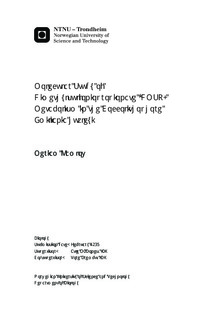| dc.description.abstract | The compatible solute dimethylsulfoniopropionate (DMSP) is made in prodigious amounts by many single-celled marine phytoplankton. Emiliania huxleyi is the most prominent coccolithophore, distributed across the world's oceans and forming regular blooms that can cover over hundred thousand square kilometers. The blooms act as an important source of dimethyl sulfide (DMS). The enzymatic cleavage of DMSP to DMS and either acrylate or a proton 3-hydroxypropionate (3-HP) appears via the action of the enzymes known generically as DMSP lyases. The emitted DMS can be transformed by DMS-consuming bacteria or released into the atmosphere and can be oxidized further to sulfate aerosols that form cloud condensation nuclei (CCN), which may influence global climate by increasing albedo. The metabolism of DMSP was investigated and compared in two E. huxleyi strains (NCMA1516 and 373) previously reported to exhibit low and high DMSP lyase activity, respectively. The EhDddD gene, encoding a putative DMSP lyase, was sequenced in both strains, and an expression analysis of EhDddD was performed. Furthermore, DMSP lyase activity was studied by determining extracellular DMS and DMSP concentrations and in vitro measurements of DMSP lyase activity (DLA).The amino acid sequence of EhDddD in 1516 contains an insertion of one amino acid at the N-terminus compared with 373, which may be aspartate or serine. The amino acid (aa) sequence contains eleven amino acid substitutions between 1516 and 373, of which six are non-conserved. EhDddD encodes an additional C-terminal protein domain of 200 amino acids in length that is missing in bacteria. The additional domain may be involved in the function of the protein or in the regulation of the protein. Expression of the EhDddD gene was 8.414 times higher in 373 than 1516, whereas in vitro DMSP lyase activity was observed to be 60.6 times higher in 373 than 1516. In determination of extracellular DMS and DMSP concentrations, extracts of both strains produced DMS from DMSP, but the DMS production was 0.8 times lower in 373 than 1516. The DMSP concentration in 373 was observed to be 1.2 time higher than 1516. These results did not correlate with in vitro DMSP lyase activity.These results suggest that the observed differences in DMSP lyase activity between E. huxleyi strains are due to structural differences and adaptation to different environmental conditions. | nb_NO |

